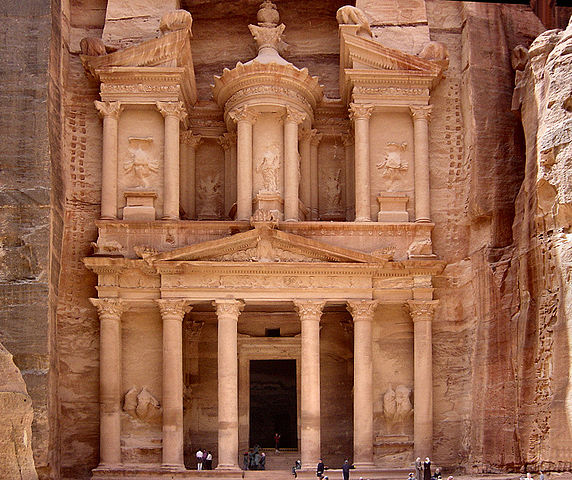
Disguised as an Arab, the Swiss adventurer Johann Ludwig Burckhardt discovered Petra in 1812, long after it had been abandoned and left to the elements and the bedouins. Since then, droves of visitors from far and wide have descended on this Nabatean city carved out of the spectacular sandstone cliffs of southern Jordan. Tourists are now given the chance to invest in a guided tour to view the best sights in Petra, Jordan, amongst many other fascinating places Jordan has to offer. If you are interested in visiting Jordan and want an experienced tour guide to show you the best places in Petra, take a look at Jordan Tours 2020.
In its heyday more than one thousand years ago, Petra was wealthy and powerful, having grown prosperous from the lucrative frankincense and myrrh trade. With a population of 20,000 to 30,000, it was one of the grandest cities in the Middle East, the ruins of which amazed Burckhardt and those who came after him.

An oasis in a forbidding desert, Petra — a protected world heritage site since the mid-1980s — was blessed with fountains and pools overflowing with water, distinguished by elaborate buildings considered marvels of design and engineering, and dotted with scores of tombs. As big as contemporary Manhattan, it was the envy of the ancient world.
Featured as a backdrop in Steven Spielberg’s movie, Indiana Jones and the Last Crusade, it drew intrepid but illegal Israeli travellers in the 1950s eager to feast their eyes on wonderful structures such as the Treasury and the Monastery.

Petra — Lost City of Stone, scheduled to be broadcast by the PBS network on Wednesday, January 24 at 8 p.m. (check local listings), focuses on two of its enduring mysteries.
The Treasury, 80 feet wide and 127 feet tall, is easily the most impressive building in Petra. But how was it built? The filmmakers set out to find out how its magnificent facades were carved without the benefit of wooden scaffolding. As well, they seek to pinpoint the sources of its water supply.

These questions are answered by a team of academics and stone carvers led by Tom Paradise, a geo-scientist from the University of Arkansas. In their quest for answers, they build a smaller version of the Treasury in the sandstone hills of California, using traditional chisels powered by electricity.
Being inhabitants of the desert, the Nabateans were familiar with every natural spring and stream in the vicinity. And realizing that Petra could be flooded by dangerous flash floods during the winter months, they built dams to protect the city. The Nabateans were master hydraulic engineers.
At its height, Petra could draw fresh water from eight springs, storing it in more than 100 cisterns and reservoirs. Thirty six dams held back the rushing torrents of flash floods until they could no longer do so.

Due to their extraordinary skills, craftsmen were able to sculpt the Treasury from the sandstone canyons of Petra. They began on top and worked their way down, standing on wooden platforms held in place by giant pins. The mounds of debris chipped from the sandstone created a ramp that enabled them to continue their work uninterruptedly.
Petra, heavily damaged by a catastrophic flash flood in the second century and destroyed by a huge earthquake in 363 AD, remained more or less hidden for centuries. But thanks to an intrepid Swiss traveller nearly 200 years ago, Petra is virtually a household name in the travel industry today.
